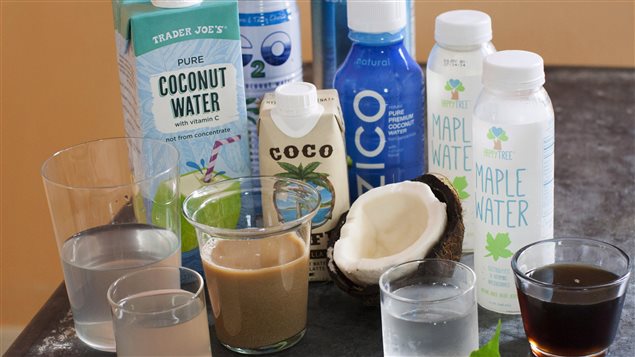Maple Water may be the next big thing in the water market. The growing popularity of coconut water, vitamin water and even asparagus water, has created a market of US $400 million. Now a renewed interest in something aboriginal people in eastern Canada have enjoyed every spring, is presenting new opportunities.
“100 per cent what comes out of the tree”
Brenda Murphy is a professor in the Society, Culture and Environment program at the Brantford campus of Wilfred Laurier University. She, and colleagues, Professor Laura Brown, and Professor Annette Chretien, a metis woman, have been studying maple trees and what they provide, for several years now.
ListenProfessor Murphy says they’re focusing on the socio-economic, cultural, and spiritual properties of maple trees. She says, they bring people together in the spring, and they provide carbon sequestration, not to mention the tourist industry that has grown around witnessing the magnificent colours in the fall.
Professor Murphy says maple water is native tradition. “It is a very important part of cultural and spiritual awakening in the spring… it’s a key element for many aboriginal Canadian people. It’s part of a much deeper relationship with the environment”
With the spotlight now on this nourishing sap, scientists are finding several health benefits; it’s lower on the glycemic indes so there is not as much of an insulin spike, and maple water contains anti-oxidant properties, and micro-nutirents
Professor Murphay says “water is heavy,so from an environment perspective, moving water, such as coconut water or any other water from a tropical country is going to be expensive.”
“light and delicate”
The growing popularity and availablility of maple water is part of the move to consuming local food and being aware of environemtal sustainability She says, “it’s an emerging market, there’s not a lot of suppliers yet.”
Maple water is “100 per cent what comes out of the tree” according to Murphy. She says, chuckling, ‘that is what is so cool about this. You literally take what comes out of the tree and you bottle it or pastuerize it or whatever you need to do get it into a shelf-stable form because raw sap, when it comes out of the tree, raw sap has to be processed within 24 hours or it goes bad.” Most producers are using the tetra-pak packaging these days.
To taste, Murphy describes it as ‘light and delicate’. “It’s like taking a glass of your very best filtered, from a spring type of water and just adding a bit of sweetness to it. It’s very light, it’s very refreshing.”
It’s not like maple syrup, it’s light, it’s see-through, it’s clear. Murphy understands that it’s a little strange to be thinking of drinking sap “A lot of saps you think of would be like thick and gooey… not liquidy at all, you think of pine-gum on a tree, or you think of the sap that comes out of a pine tree… it’s nothing like that, it’s this beautiful clear liquid.
“Remember that trees are the world’s natural processor of the environment” she advises. These days Murphy and her team are looking into the effect of climate change on the maple industry, “We’ve been looking at both what would we lose if we were to lose sugar maple eco-systems and maple syrup because of climate change over the next fifty to a hundred years and then what are some of the projected impacts and then the bigger question for us is then what do we do to mitigate against those potential changes… and how can we help the industry adapt.
Professor Murphy says the industry is vital and growing. Many aboriginal people are getting back into it. And the research is broadening. Ryan Huron, one of her students spent time looking into archives and discovered the importance of maple products in Canada’s history.
“it’s very clear that aboriginal people, metis and first nations, were really big into maple at the time of first contact and continued to be right up until the 18th, 19th early 20th centuries, making thousands of pounds of maple sugar, not maple syrup so much because it wasn’t stable and we didn’t have pasteurization the way we have now… mostly they would be boiling it down to sugar so it was shelf-stable, but thousands and thousands of pounds and it was exported to Europe… and then it dropped off and so we know because of colonization and the residential schools… that a lot of those traditions have had a hard time keeping up.
Professor Murphy and her team are helping with the renaissance of the maple industry and revitalizing both the indigenous contribution and traditions. As a result more Canadians may be enjoying this spring tonic, in the way nature intended.







For reasons beyond our control, and for an undetermined period of time, our comment section is now closed. However, our social networks remain open to your contributions.